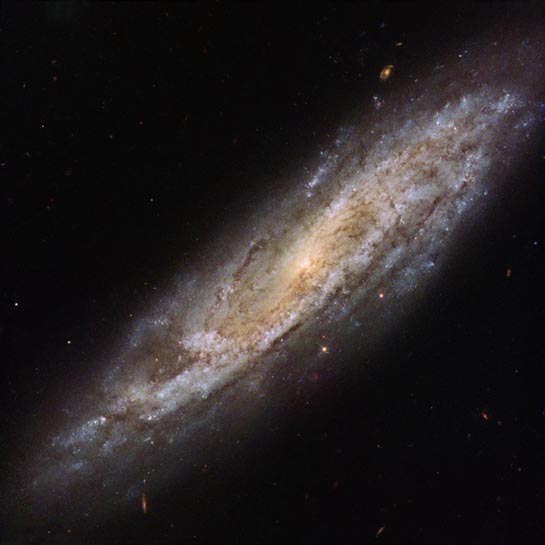
Spiral Galaxy
RA 9h 9m 34.38s Dec 33° 7' 19.30"
Lynx
90 million light years
12.2
3.7 x 1.1 arcmin
2.65 x 2.47 arcminutes
North is 16.1° right of vertical
ESA/Hubble & NASA, A. Filippenko
January 6, 2020
ABOUT
THIS IMAGE:
This Picture of the Week, taken by the NASA/ESA Hubble Space Telescope, shows a close-up view of a galaxy named NGC 2770. NGC 2770 is intriguing, as over time it has hosted four different observed supernovae (not visible here).
Supernovae form in a few different ways, but always involve a dying star. These stars become unbalanced, lose control, and explode violently, briefly shining as brightly as an entire galaxy before slowly fading away.
One
of the four supernovae observed within this galaxy, SN 2015bh, is especially
interesting. This particular supernova initially had its identity called
into question. When it was first discovered in 2015, astronomers classified
SN 2015bh as a supernova imposter, believing it to be not an exploding
star but simply an unpredictable outburst from a massive star in its final
phase of life. Thankfully, astronomers eventually discovered the truth
and the object was given its correct classification as a Type II supernova,
resulting from the death of a star between eight and 50 times the mass
of the Sun. NGC 2770 was discovered on December 7, 1785 by William Herschel.